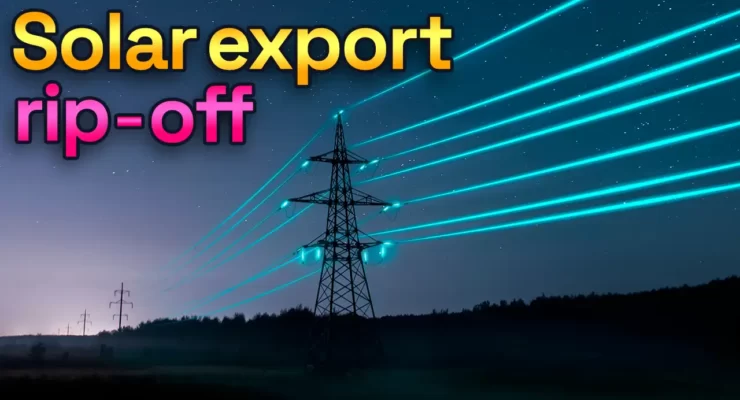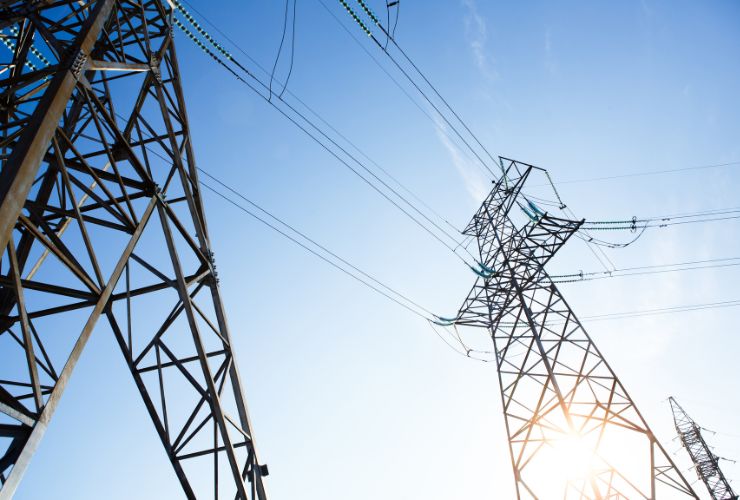
Fast read
In the early days of solar (2008-2012), most Australian states offered premium Feed-in Tariffs (FiTs) above standard electricity rates to incentivise solar investment. However, as solar costs decreased, sustaining premium FiT rates became unviable, leading to their reduction and eventual removal.
Currently, FiT rates across the country range from 5 to 10 cents, subject to change depending on wholesale electricity prices and individual retailers' business models. Changes in governmental regulations and renewable energy targets can lead to adjustments in FiTs to encourage solar energy use.
Additionally, fluctuations in renewable energy availability and demand can affect FiTs, with rates rising during scarcity and falling during surplus. The dynamic nature of these factors ensures FiTs align with market conditions, offering fair compensation for exported solar electricity.
What influences the price of premium feed-in tariffs?
Australia has been at the forefront of solar energy adoption, with over 3 million households and businesses now equipped with rooftop solar systems. This rapid expansion has been driven by a combination of factors, including government incentives, falling solar panel prices, the relatively high sun irradiation in the whole country, overall cheap system install costs, and a growing awareness of climate change. However, one of the challenges of this rapid growth has been the regular changes in premium solar feed-in tariffs (FiTs).
Understanding the premium feed-in tariff equation
A feed-in tariff is essentially a payment that electricity retailers make to households that generate solar power and export it back to the grid. This payment for exported solar will then be credited to the regular electricity bills and is a nice positive addition to the other financial benefits of a home solar system.
For example during the daytime, when solar energy generation is at its peak, wholesale prices tend to be lower. This is happening because there is a lot of solar power available from the growing number of solar PV systems. Additionally, electricity from traditional power plants such as coal and gas generators is also being added to the grid.
The history of premium feed-in tariffs
In the early days of solar from around 2008 to 2012 most states in Australia had premium feed-in tariffs (FiT) which were above the standard consumption rates for electricity at that time. Various Australian State Governments created these incentives of solar export payments to encourage households and small businesses to invest in solar.
As solar costs went down, the government found it too expensive to keep paying high feed-in tariff rates. Solar costs decreased, causing the government to find high feed-in tariffs too expensive to maintain.
In 2015, they began lowering these rates. Eventually, they completely eliminated them. In NSW, the rates were as high as 60 cents per 1 kWh of exported electricity.
Across the country now feed-in tariff rates are between 5 to 10c. However, this does vary between retailers and does change from year to year. The retailer will calculate, based on their business model, what they can afford to pay for solar electricity that is exported to the grid.
How prices are set
As the average wholesale price of electricity does change over time, the price that energy retailers can offer for solar electricity will change in line with this. The easiest way to think of it in regards to pricing is that if they can buy electricity at 5 or 6c of the wholesale market you can expect them to pay much more for this for solar power.
YearBenchmark c/kWh2023/247.7 to 9.42022/236.2 to 10.42021/224.6 to 5.52020/216.0 to 7.32019/208.5 to 10.4
As an example in NSW, the Independent Pricing Tribunal (IPART) releases a suggested premium feed-in tariff pricing guide every year for exported solar as per below, where you can see these changes over recent years.
You may see a higher rate on your energy bill. This cost includes expenses like using powerlines for transmission and administrative fees from the retailer. These costs still need to be accounted for by the retailer to send the electricity to another household.

Government policies
Changes in governmental policy and renewable energy targets are one of the main causes of the changes in feed-in tariffs. Governments frequently evaluate and modify their regulations to meet their objectives for renewable energy. Depending on how well they are doing in meeting their goals for renewable energy and the state of the energy market, the government may increase or decrease feed-in tariffs to encourage the use of solar energy.
Politics, a change in the composition of the government, or a change in the country’s energy goals could all influence policy changes.
In some states, such as New South Wales and Queensland, the government has now set minimum feed-in tariff rates. However, these minimum rates have also been declining over time. In addition, some states have introduced time-based FiTs, which vary depending on the time of day.
Low feed-in tariffs lead to more battery sales
One of the other consequences of lower and lower feed-in tariffs is that owners, especially of large solar systems are now installing more and more battery storage systems, to keep their renewable power and use it at night instead of exporting it at low prices.
Market trends and electricity pricing might also affect feed-in tariffs. Fuel costs, infrastructure spending, and demand-supply dynamics are just a few of the variables that can affect the cost of power generation.
The impact of premium feed-in tariff changes
The regular changes in premium feed-in tariffs have caused some confusion and uncertainty among solar homeowners. However, it is important to note that even with lower feed-in tariffs, solar power systems are still a cost-effective investment for many households.
A study by the Australian National University found that the average household with a 5kW solar system can save more than $2,000 per year on its power bills.
In summary
The story of feed-in tariffs in Australia is a complex and evolving narrative, shaped by the interplay of market dynamics, government policies, and the supply and demand of renewable energy.
In the future, we will rely more on renewable energy sources. Comprehending certain factors is crucial to maximise the benefits of solar energy in Australia. This journey, much like the path of the sun across the Australian sky, is ongoing and full of potential.
Of course, the ever-changing landscape of solar feed-in tariffs can be frustrating for solar homeowners. However, it is important to remember that solar power is still a valuable asset, even with lower feed-in tariffs.
Sources:
Australian Energy Market Commission (AEMC)


